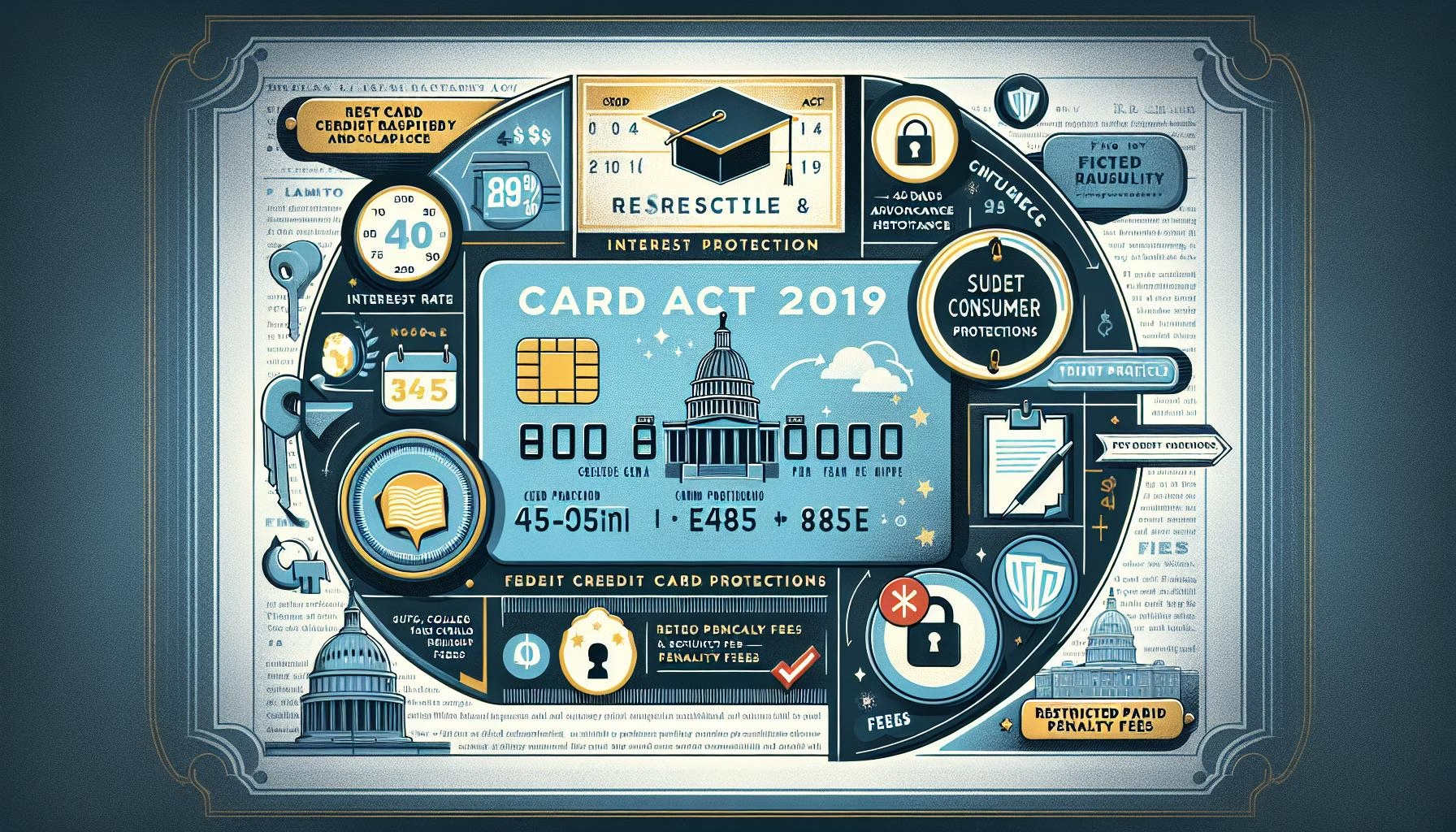If you own a credit card, chances are you’ve benefited from the CARD Act—even if you’ve never heard of it before. Officially known as the Credit Card Accountability, Responsibility, and Disclosure Act of 2009, this law made huge steps in protecting American consumers from unfair practices by credit card companies. Before this law, many people were hit with confusing fees, unpredictable interest hikes, and unclear terms that made managing credit more difficult than it needed to be.
Let’s dive into how this law positively impacts your wallet and your peace of mind.
What is the CARD Act?
The CARD Act of 2009 is a federal law designed to protect consumers from unfair credit card practices. It was signed into law by President Barack Obama and went into effect in stages starting in 2010. The goal? To increase credit card transparency, prevent sudden rate hikes, and give cardholders a fighting chance to manage their debt responsibly.
Why Was It Needed?
Before this act, credit card companies had a lot of freedom to change terms without warning. Interest rates could climb overnight. Fees could pile up unexpectedly. Many people found themselves drowning in debt, not because of poor financial choices, but because of a lack of clear information.
Think of it this way: Imagine you’re suddenly charged extra for using your GPS while driving, but were never told about it until after you needed it most. That’s what many credit card users were experiencing with fees and interest rates. The CARD Act stepped in to change that.
Here Are 5 Key Protections the CARD Act Offers
1. Clearer Credit Card Terms
Do you remember the last time you read your credit card agreement? Probably not—and you’re not alone. These documents used to be filled with complex language designed to confuse. The CARD Act put a stop to that.
- Credit card terms must now be written in plain, easy-to-understand language.
- Key details like interest rates, fees, and due dates must be clearly disclosed.
This means you’ll be able to make informed decisions because you actually understand the terms of your account. No more digging through legalese just to figure out when your payment is due!
2. Restrictions on Interest Rate Increases
Before the CARD Act, imagine opening a credit card with a nice low interest rate—only to see it shoot up after a few months without any warning. That’s now illegal in most cases.
- Interest rates on new charges can’t be increased during the first year.
- If changes are made, you must receive a minimum of 45 days’ notice.
- Rate increases can’t apply retroactively to what you’ve already purchased under the old rate.
This gives you time to react—whether that means paying off your balance or shopping around for a better rate.
3. More Realistic Payment Schedules
Many credit card bills used to have random-looking due dates or post times, leading people to unknowingly pay late—and rack up fees. The CARD Act improved that by making things predictable and practical.
- Credit card bills must be sent out at least 21 days before their due date.
- Due dates must fall on the same day every month.
- If the due date lands on a weekend or holiday, the payment must be processed without penalty on the next business day.
Now, there’s no more guessing. You know exactly when to pay, and that helps you avoid unnecessary late fees (which can really add up).
4. Limits on Underage and Student Credit
Before the CARD Act, credit card companies aggressively marketed to college students—often tempting them with free pizzas or t-shirts in exchange for signing up. Many young adults ended up buried in debt before they truly understood the consequences.
Now, that’s changed. Here’s how the CARD Act protects young consumers:
- Anyone under 21 must show proof of income or have a co-signer to get approved for a credit card.
- There are also limits on how cards can be marketed on college campuses.
This added layer of protection helps teach financial responsibility and keeps young adults from starting their financial lives in the red.
5. Protection from Surprise Fees and Charges
Ever paid $35 for being one day late on your credit card payment? You’re not alone. Late fees and over-limit fees often felt like traps with no escape. Thanks to the CARD Act:
- Penalty fees must be “reasonable and proportional.”
- You can’t be charged over-limit fees unless you opt in for that feature.
This means you’re less likely to be blindsided by hidden fees, giving you more control over your finances.
Still Have Questions?
You might be wondering, “Does the CARD Act apply to all credit products?” Great question! While it covers most personal credit cards, business credit cards, for example, may not always fall under the same rules. That’s why reading the fine print is still a smart move, even with these protections in place.
Why the CARD Act Still Matters Today
Even though the law passed over a decade ago, its protections are just as important today. As more people shift to digital wallets, buy-now-pay-later options, and virtual banking, staying informed is critical. It’s not just about catching up on past problems—it’s about building a better future for personal finance.
If you’re looking to understand more about managing personal finances, check out our post on how to improve your credit score quickly.
The Bottom Line
The CARD Act was a game changer for anyone with a credit card. By making credit terms clearer, limiting surprise fees, and putting consumer interests first, this law helps millions of people make smarter, more confident financial decisions.
And while no law is perfect, the CARD Act took a big step in putting power back where it belongs—in your hands.
If you’d like to read more about the specifics of this legislation, check out the full article on Investopedia.
Final tip: Always stay updated on your card’s terms and your rights—it’s the best way to keep your finances in good shape!

